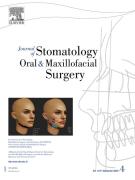Cystic teratoma of the head and neck region in the neonate – description of three cases - 08/05/25
 , Christian Davila a, Johann Ludwig Nafz a, Mona Jaber a, Susanne Jung a, Jacqueline Lisson a, Miriam Schulte b, Johannes Kleinheinz a
, Christian Davila a, Johann Ludwig Nafz a, Mona Jaber a, Susanne Jung a, Jacqueline Lisson a, Miriam Schulte b, Johannes Kleinheinz aCet article a été publié dans un numéro de la revue, cliquez ici pour y accéder
Abstract |
Congenital head and neck malformations frequently pose a significant diagnostic challenge for physicians. Less than 10% of congenital teratomas occur in the head and neck region. The identification of these lesions is often a serendipitous finding on prenatal ultrasound. Surgical intervention may be required immediately post-birth depending on the location and dimensions of the identified teratoma. The objectives of the current study are to present three cases of mature teratoma, diagnosed post-birth, in newborn male patients and to bring attention to the difficulties in the treatment of such a condition. All cases were diagnosed as G0, according to the Gonzalez-Crussi grading system. Following the protocols of the MAKEI study group, the treatment and follow-up plans were established. Based on the results so far achieved, and the experience acquired from these reported cases, it can be suggested that teratomas, primarily located in the nasopharynx region, have surgical resection as the first line of treatment. Additionally, long-term follow-ups should be performed periodically through different types of exams, such as imaging and laboratory exams.
Le texte complet de cet article est disponible en PDF.Keywords : Teratoma, Mature teratoma, Benign teratoma, Maxillofacial abnormalities
Plan
Bienvenue sur EM-consulte, la référence des professionnels de santé.
L’accès au texte intégral de cet article nécessite un abonnement.
Déjà abonné à cette revue ?

